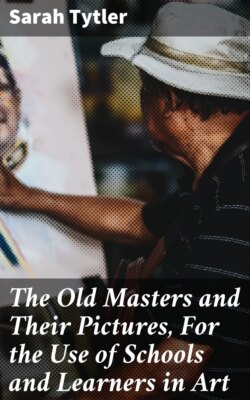Читать книгу The Old Masters and Their Pictures, For the Use of Schools and Learners in Art - Sarah Tytler - Страница 8
Оглавление'´Twas love connubial taught the smith to paint,'
Quintin Matsys lived and died a respected burgher of Antwerp, a member of the great Antwerp painters' guild of St. Luke. He was twice married, and had thirteen children.
Whatever might have been his source of inspiration, Quintin Matsys was an apt scholar. His 'Descent from the Cross,' now in the Museum, Antwerp, was the 'Descent from the Cross,' and the picture in the Cathedral, until superseded by Rubens´ master-piece on the same subject. Still Quintin Matsys´ version remains, and is in some respects an unsurpassed picture. There is a traditional grouping of this Divine tragedy, and Quintin Matsys has followed the tradition. The body of the Lord is supported by two venerable old men—Joseph of Arimathea and Nicodemus—while the holy women anoint the wounds of the Saviour; the Virgin swooning with grief is supported by St. John. The figures are full of individuality, and their action is instinct with pathos. For this picture Quintin Matsys—popular painter as he was—got only three hundred florins, equivalent to twenty-five pounds (although, of course, the value of money was much greater in those days). The Joiners´ Company, for whom he painted the 'Descent from the Cross,' sold the picture to the City of Antwerp for five times the original amount, and it is said Queen Elizabeth offered the City nearly twenty times the first sum for it, in vain.
Quintin Matsys painted frequently half-length figures of the Virgin and Child, an example of which is in the National Gallery. He excelled in the 'figure painting' of familiar subjects, then just beginning to be established, affording a token of the direction which the future eminence of the Flemish painters would take. One of his famous pictures of this kind is 'The Misers,' in the Queen's collection at Windsor. Two figures in the Flemish costume of the time, are seated at a table; before them are a heap of money and a book, in which one is writing with his right hand, while he tells down the money with his left. The faces express craft and cupidity. The details of the ink-horn on the table, and the bird on its perch behind, have the Flemish graphic exactness.
